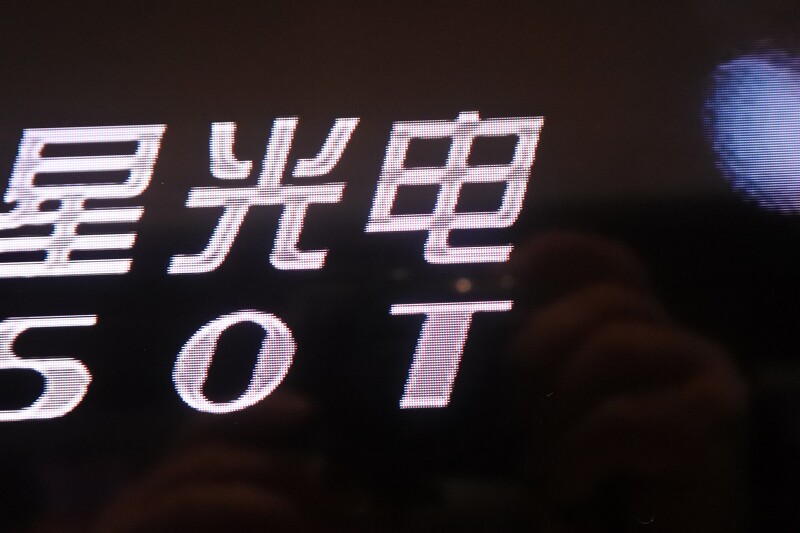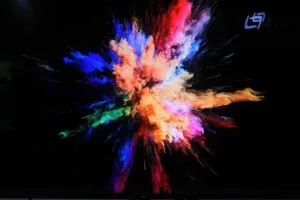My wife, Arlette, used to say my brain was like a sponge that’s been floating in dishwater. You’re not sure what it’s absorbing but sometimes you squeeze it and something interesting comes out.

Recently I’ve been watching, interviewing, discussing, and writing about premium television sets and the panels that go into them. Let’s squeeze the sponge and see what comes oout.
1. The future of OLED as THE premium TV technology is severely limited. I don’t mean that large-screen OLED is going away. Manufacturing capacity, sales, and market share are all increasing, and prices are decreasing, and will continue to do so for years. But soon it will no longer be the technology people go to for the best picture they can get. A fairly senior person from Sony, which makes both OLED and premium LCD sets, told me recently that OLED will be the entry-level premium technology. (He said this was his personal opinion, not an official Sony position, so I’m not using his name here.)
Why is this so? Because a premium OLED strains to display a 1000-nit patch on 10% of its screen area. This was not an issue when movies with high production values were mastered at a 1000-nit maximum, but the standard is rapidly moving to 4000 nits, and when current OLED TVs tone-map 4000-nit content down to a color volume with 1000-nits or less, the extreme compression impacts color fidelity and compresses color differences, sometimes to the extent that detail that’s communicated primarily by color detail is blurred or lost. An inexperienced viewer may not know what is happening, but the apparent loss of resolution is often not subtle.
Premium, local-dimming, HDR LCD-TVs using either quantum dots or RG-phosphor enhancement are now flirting with or exceeding 2000 nits maximum. The larger color volume means the tone mapping from 4000 nits is much gentler, and the screen images show it.
But how do film makers produce HDR4000 content with production monitors like the Sony BVM-X300 4K OLED Mastering Monitor, which has a 1000-nit peak and a warning light that lights up at lower luminances to tell you when you are to closed to 1000 nits to ensure color fidelity? As one film maker recently said, “You don’t like to put out pixels you haven’t looked at.” The answer is that you don’t. The BVM-X300 has been the industry standard for years, but Sony is now pushing its new dual-cell LCD monitor to the industry. The BVM-X300 is still available if you want one, but it can’t adequately display the cinematic future — and neither can OLED TVs.
So what comes next? Or maybe comes next.
2. MiniLED TV. This one even confuses people in the business. A “MiniLED” TV is an LCD-TV, which may be enhanced with quantum dots or RG phosphors. MiniLED refers to the backlight design, which uses many small (but not “micro”) LED chips in a polymer tray/optic for a backlight with many – typically about 5000 in current TV prototypes — local zones for excellent contrast and elimination (as far as I could tell in trade-show environments) of the dreaded halo effect (blooming) which has proven to be a significant problem for premium LCDs with only several hundred dimming zones. You’ll see small MiniLED displays in products soon, but all those LED chips in a TV-sized display adds to the bill of materials.
3. Dual-Cell LCD-TV. This technology puts a monochrome LCD panel behind the conventional color LCD panel. The monochrome panel modulates the panel, and can be used to provide as many viewing zones as desired up to the number of pixels in the color panel. Hisense has used a prototype TV using a BOE panel, along with quantum dots. The results were spectacular (in a trade-show setting), with OLED-like blacks on a matt screen surface and LCD-like highlights. There was some speculation the technology would be too costly and have too low a luminous efficiency for consumer use, but that thinking is changing. Hisense says the luminous efficiency drops from the usual 6% (approximately) to about 4%. That’s not going to bother the purchaser of a premium TV. Hisense promises commercial introduction next year. BOE was not the only exhibitor of dual-cell panels at this Spring’s Display Week. CSOT was also showing one. (and we have reported that Hisense will use an Innolux panel – Man. Ed.)
1. CSOT showed this LCD-TV panel with 5000-zone MiniLED backlight, as seen at SID Display Week 2019. (Photo: Ken Werner). Click for higher resolution
4. MicroLED TV. MicroLED microdisplays are already on the market, but making big ones requires micro-transfer printing (or an equivalent technology) that will transfer 24 million microLED chips from their semiconductor wafers to the TV substrate with eight or nine 9s reliabilty in about 30 minutes per panel. The industry is only about two 9s away on reliability but orders of magnitude away on transfer speed. I’d say we’re three to five years away from a TV-sized pilot line, but others say the problems are closer to solution than they appear. At CES, Samsung showed a beautiful technology demonstrator, but it is very far away from being a product.
5. The other technologies I don’t have space to talk about.
Okay, Ken. Squeeze the sponge harder. What will your next TV be? I’m looking at the dual-cell, quantum-dot LCD. It’s around the corner, and I like the idea of watching movies with the same technology that’s being used to master them. (KW)
Ken Werner is Principal of Nutmeg Consultants, specializing in the display industry, manufacturing, technology, and applications, including mobile devices, automotive, and television. He consults for attorneys, investment analysts, and companies re-positioning themselves within the display industry or using displays in their products. He is the 2017 recipient of the Society for Information Display’s Lewis and Beatrice Winner Award. You can reach him at [email protected] or www.nutmegconsultants.com.
 2. Detail: With 5000 dimming zones, can you see any blooming or halo effect? (Photo: Ken Werner) Click for higher resolution
2. Detail: With 5000 dimming zones, can you see any blooming or halo effect? (Photo: Ken Werner) Click for higher resolution

